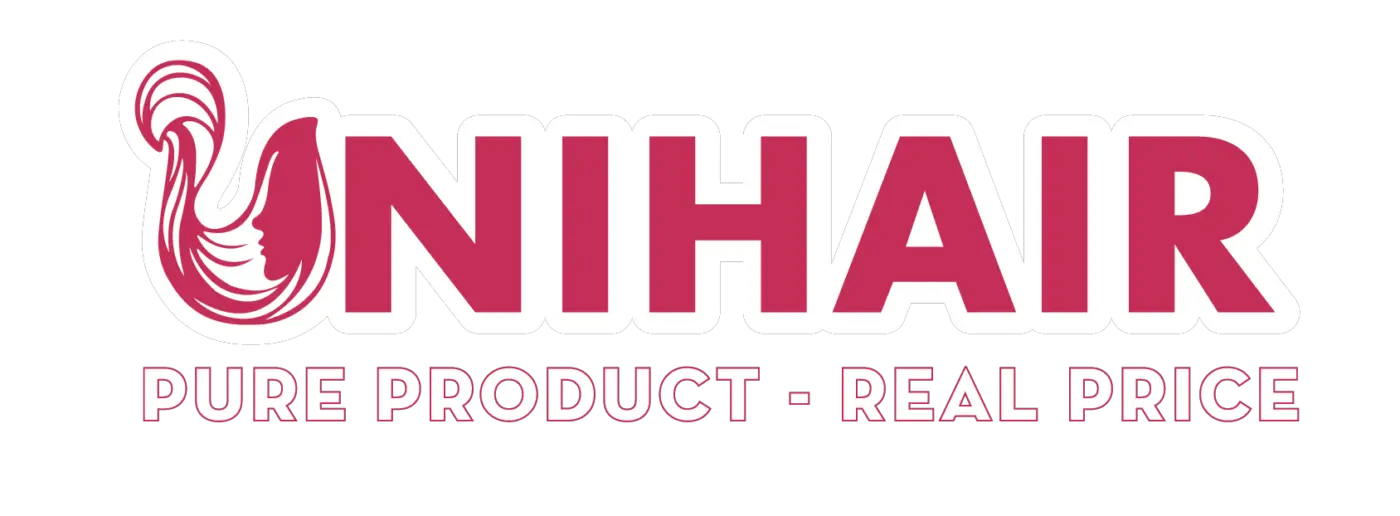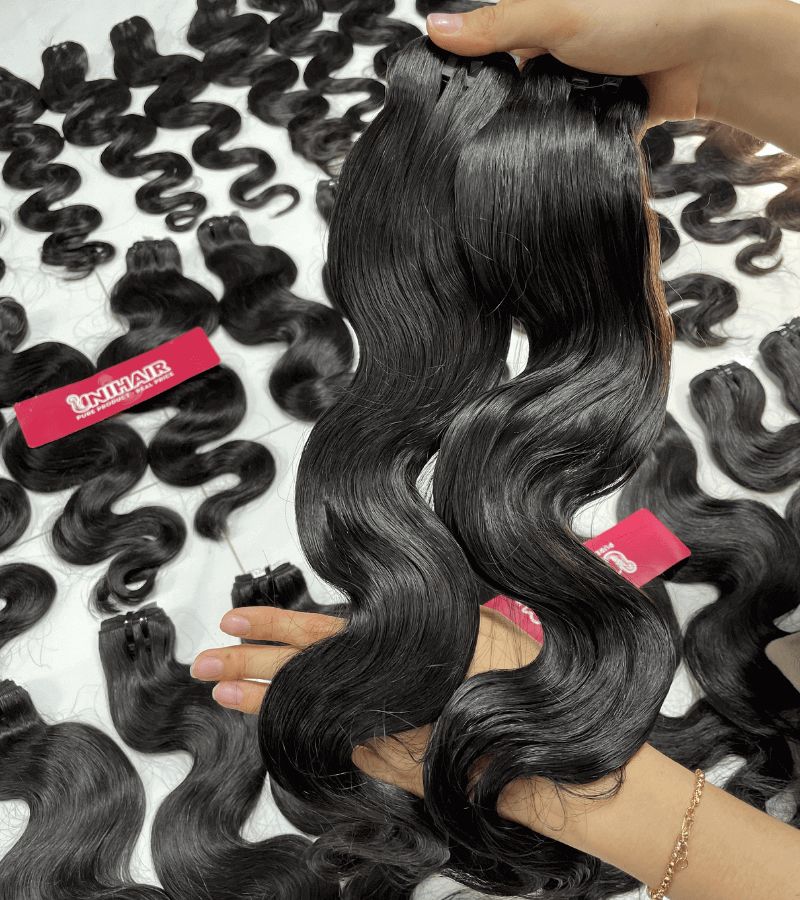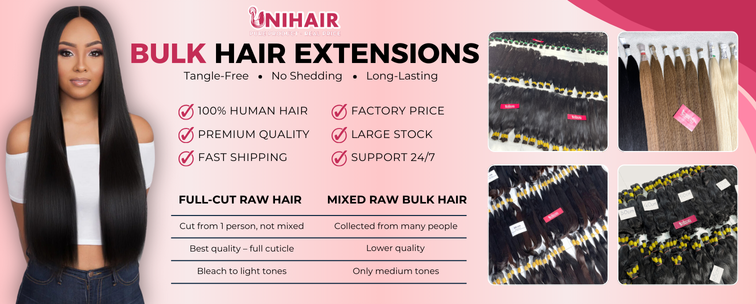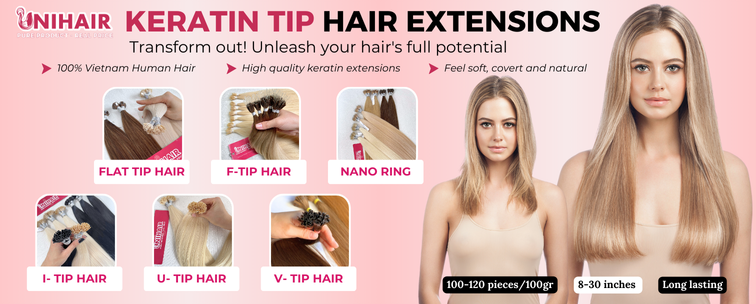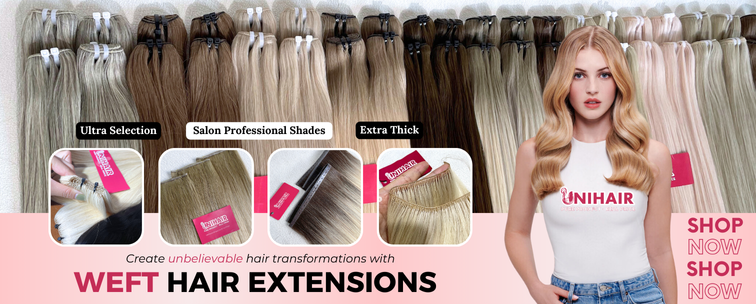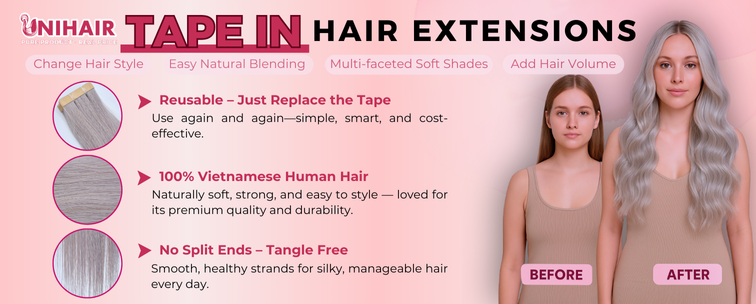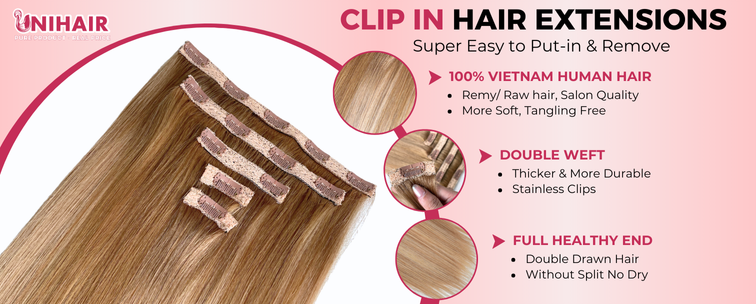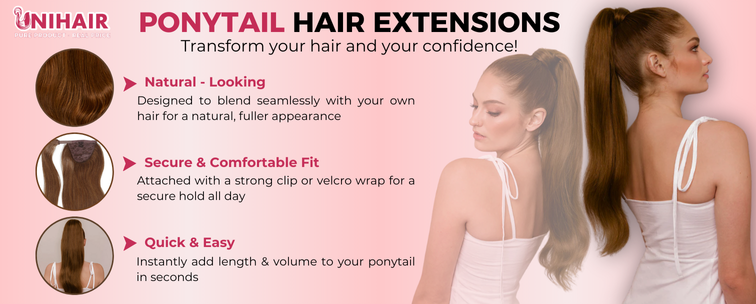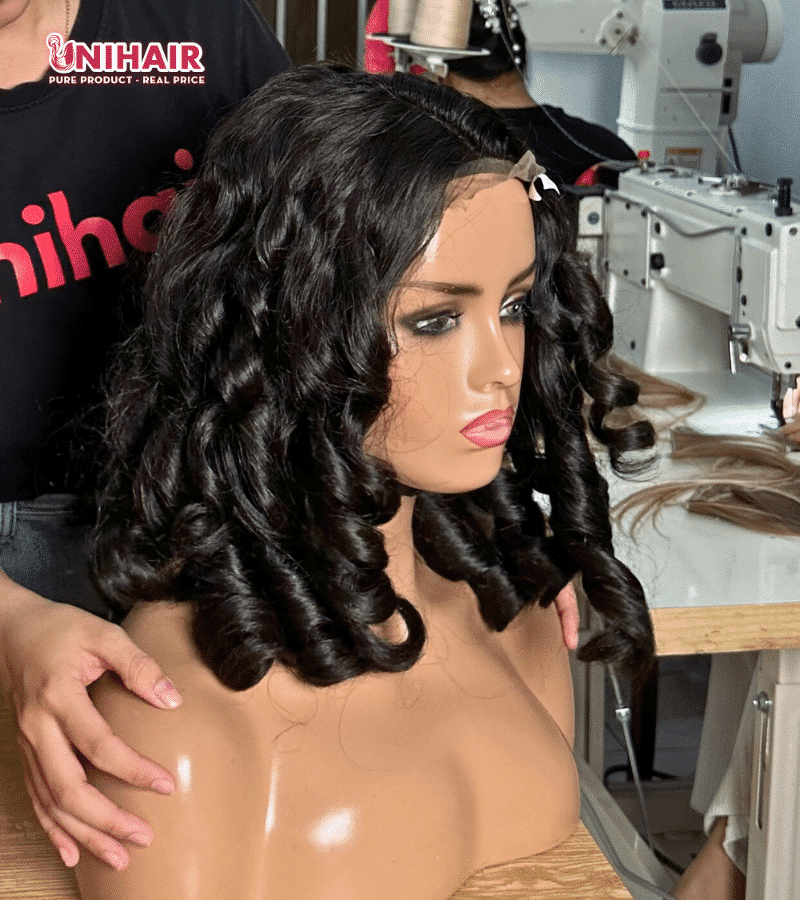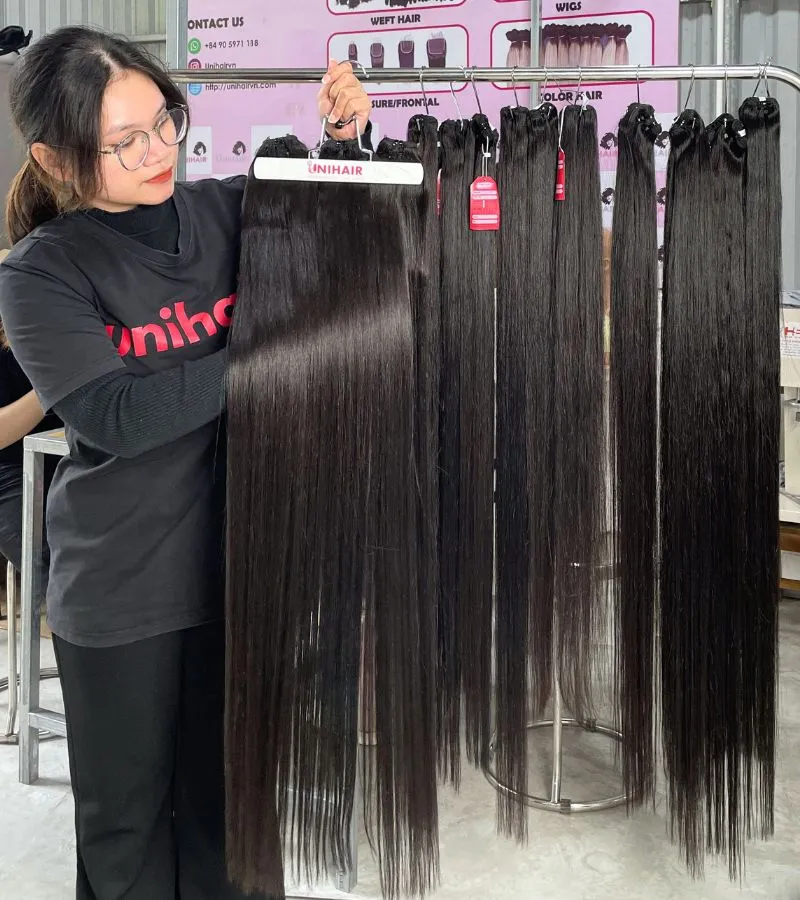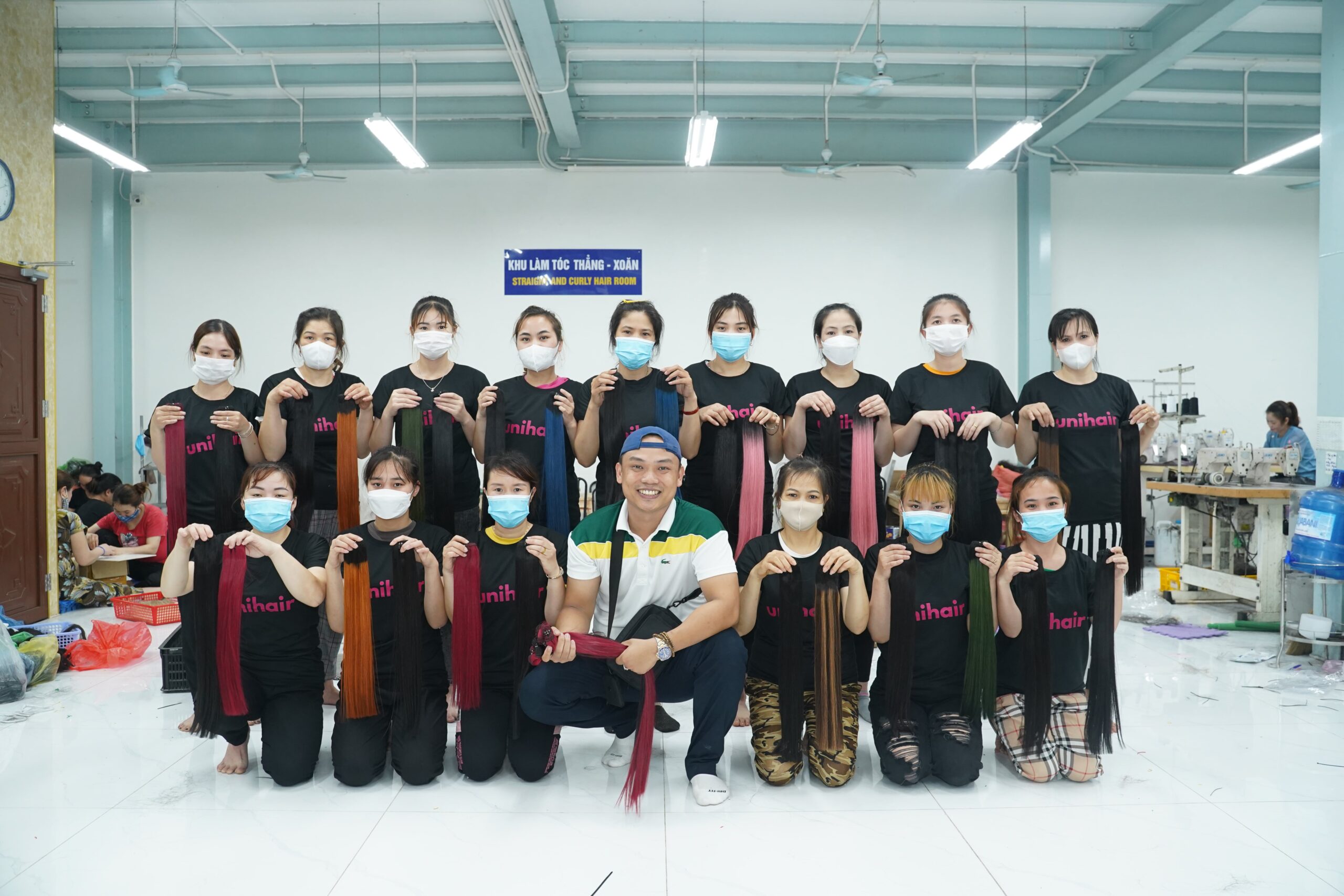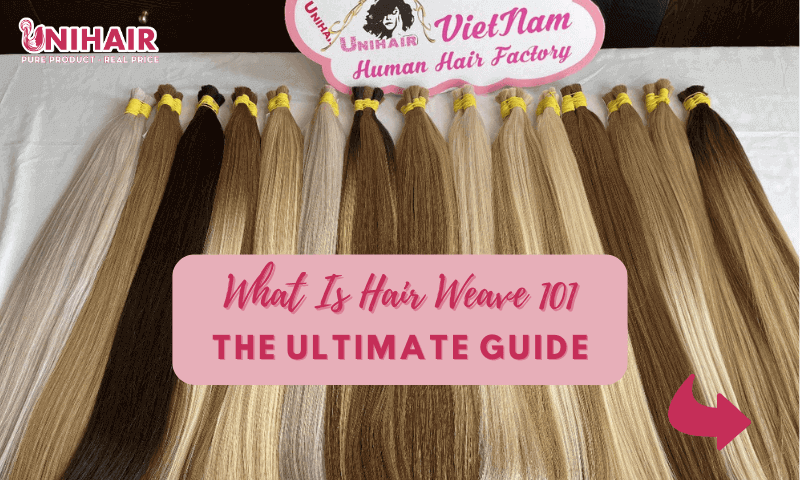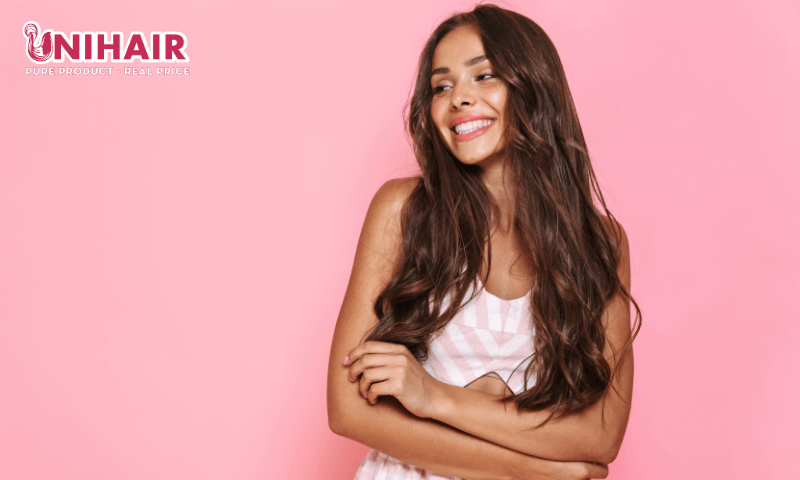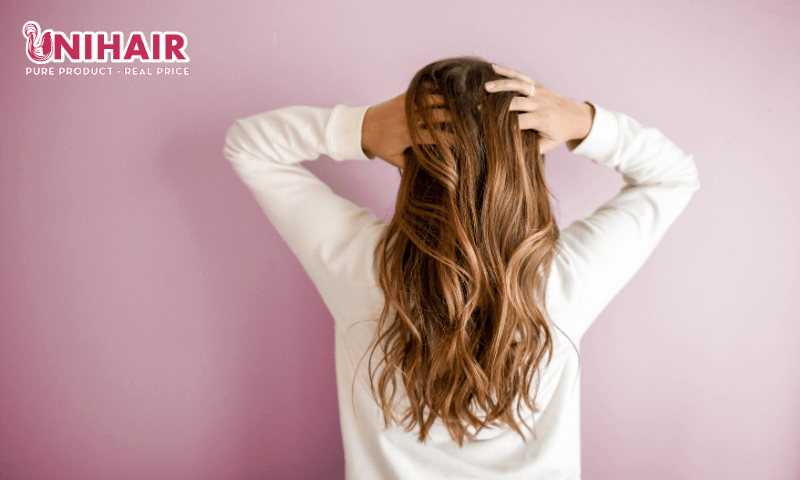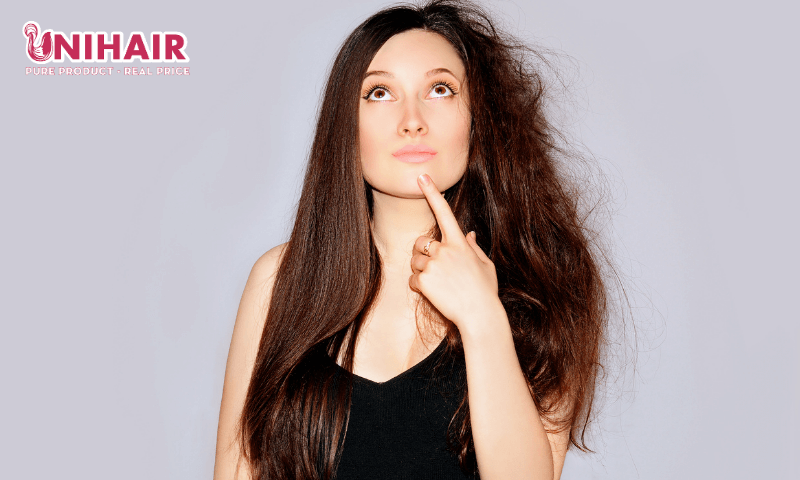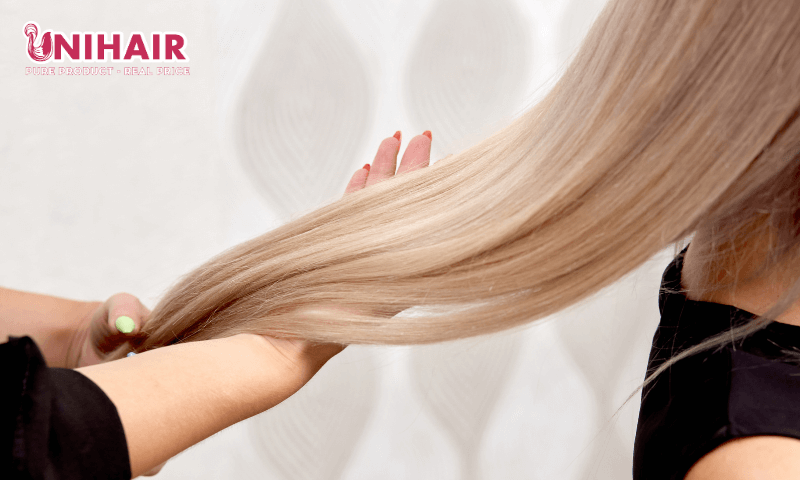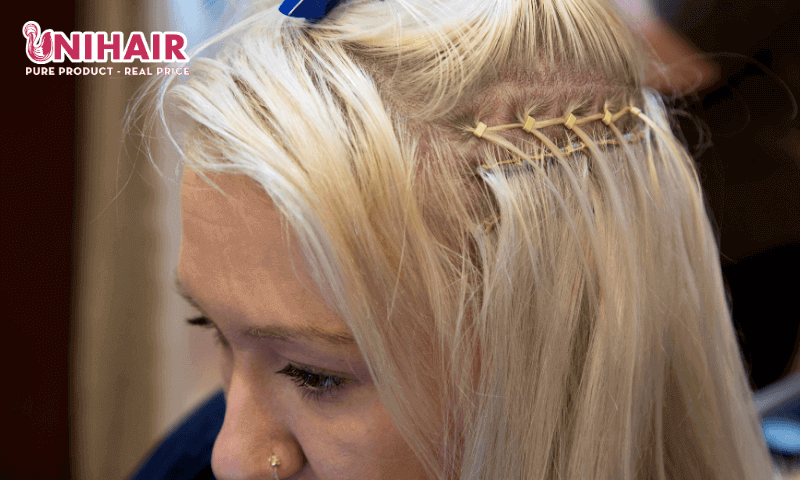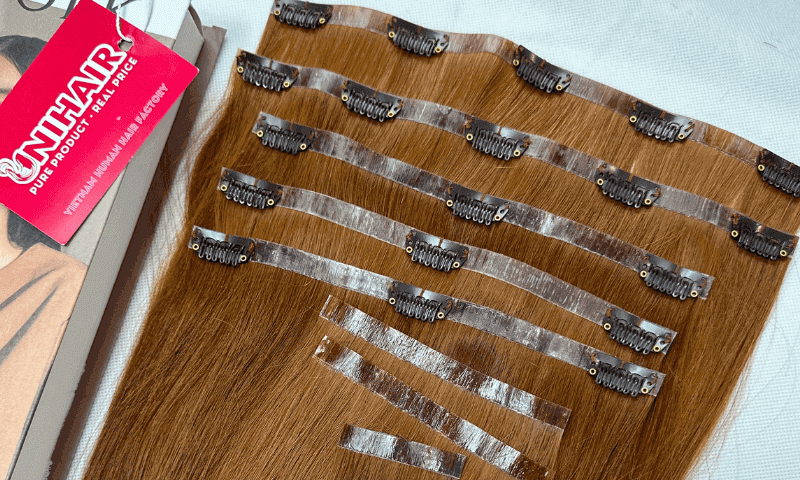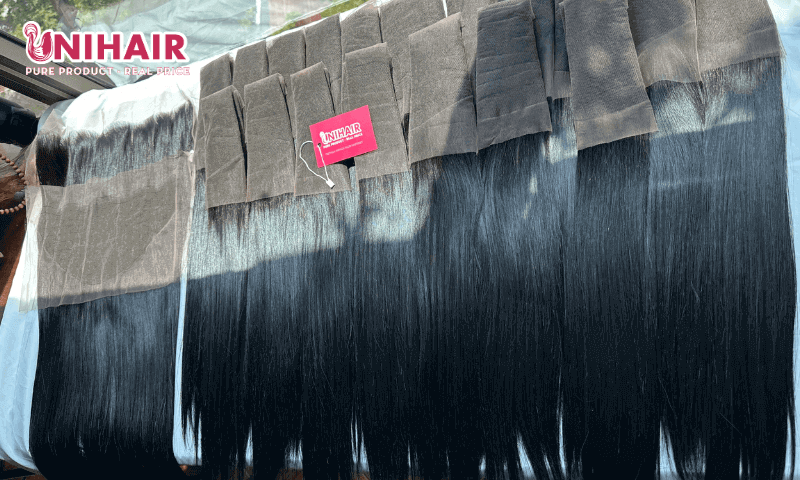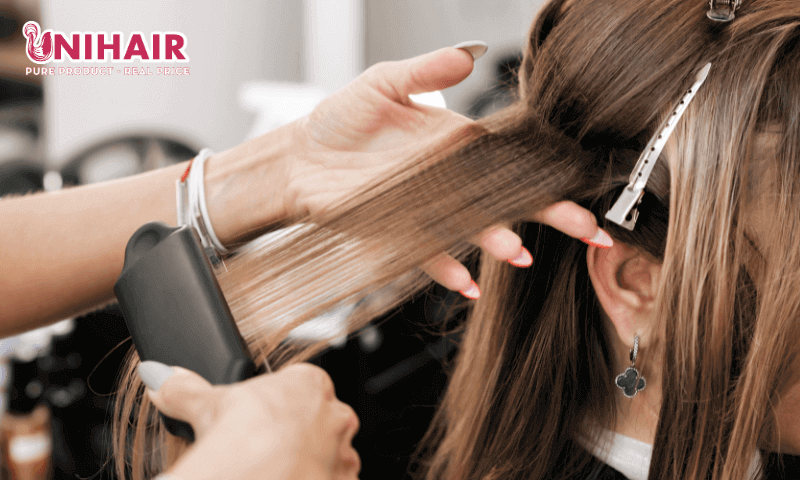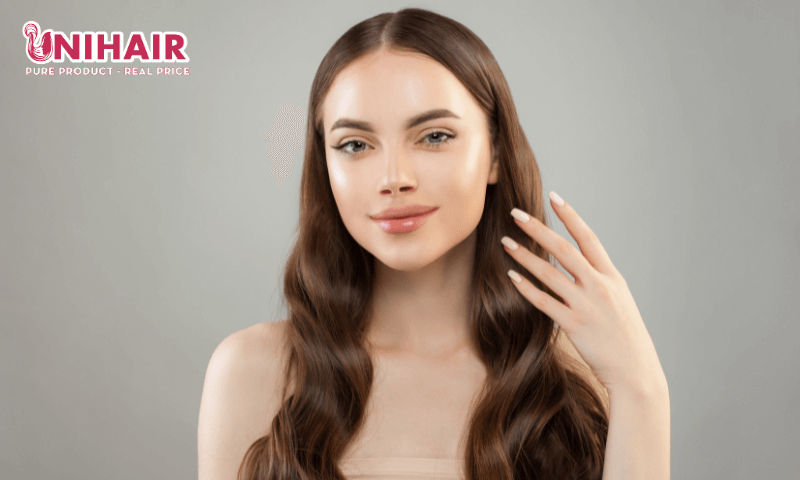What Is Hair Weave 101: The Ultimate Guide
Welcome to our blog post where we’ll answer the burning question: “What is hair weave?” Whether you’re new to the world of hair extensions or a seasoned pro, this comprehensive guide will unravel the intricacies of hair weaving, revealing its secrets and benefits. So, if you’ve ever wondered about the magic behind those luscious locks, read on as we demystify the art of hair weaving.
What Is Hair Weave? – Things to know
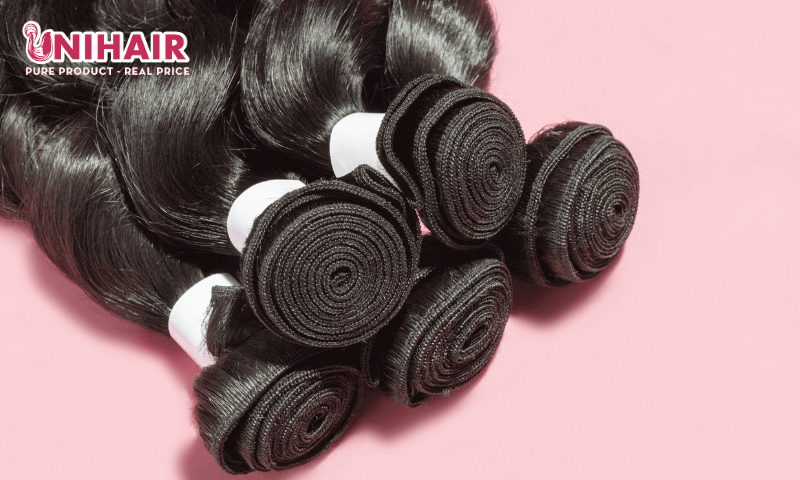
“What is hair weave” is a common question that arises among individuals seeking to explore versatile ways to enhance their natural hair, as the concept of hair weaving opens up a world of possibilities for transforming one’s hairstyle, adding volume, and achieving a unique and stunning look.
A hair weave, often referred to as “weave hair,” is a popular method for adding length, volume, and texture to one’s natural hair. To understand precisely “what is a hair weave,” it’s essential to grasp the hair weave meaning.
Essentially, a hair weave involves attaching synthetic or natural hair extensions to a person’s existing hair, creating a seamless blend that looks natural and enhances the overall appearance. This process offers endless possibilities for achieving various hairstyles, from longer, flowing locks to intricate braids and twists. What is hair weave? Well, it is a transformative technique that empowers individuals to achieve the hair of their dreams, making it a sought-after solution for those seeking versatility and glamour.
Benefits Of Hair Weave
Versatility In Styling
One of the remarkable benefits of hair weave is its ability to offer unparalleled versatility in styling. Understanding what is hair weave is reveals that it allows individuals to experiment with a wide range of hairstyles that may not be achievable with their natural hair alone. Whether it’s sleek straight hair, bouncy curls, or intricate braids, a well-executed hair weave provides endless possibilities. This versatility empowers individuals to express their creativity and switch up their looks without committing to a permanent change.
Protection For Natural Hair
For those wondering, “Is hair weaving good or bad for natural hair?” it’s important to note that when done correctly, hair weaving can be a protective measure for your natural locks. A good hair weave can shield your hair from the harsh effects of daily styling, heat, and environmental factors. It serves as a buffer, preventing excessive manipulation and damage. By allowing your natural hair to take a break from constant styling, a hair weave can contribute to healthier, longer-lasting locks.
Enhanced Volume And Length
Another compelling advantage of a hair weave is the instant boost in volume and length it provides. Whether you’re dealing with thinning hair or simply desiring a dramatic change, a well-installed weave can deliver stunning results. It adds density and length to your existing hair, creating a fuller, more vibrant appearance. This enhancement in volume and length is a game-changer for those seeking to achieve a lush and luxurious mane. Understanding the hair weave definition is the first step towards unlocking these remarkable benefits for your hair.
Drawbacks Of Hair Weaves
High Cost
When exploring the world of hair weaving and understanding what is hair weave, one significant drawback to consider is the high cost associated with this method. Achieving a good hair weave often involves purchasing high-quality human hair extensions and paying for professional installation. Additionally, periodic maintenance appointments and the purchase of specialized hair care products further add to the expenses. For individuals on a tight budget, this financial investment can be a deterrent.
Maintenance Challenges
Maintenance is a crucial aspect of maintaining the quality and longevity of a hair weave. After comprehending the hair weave definition, it becomes evident that these extensions require consistent care and attention. Regular washing, conditioning, and styling are essential to prevent issues such as matting, tangling, and damage to both the natural hair and the extensions. The time and effort required for upkeep can be a significant drawback, particularly for those with busy schedules who may find it challenging to allocate sufficient time for maintenance.
Potential Allergic Reactions
Another drawback to be aware of in terms of what is hair weave is the possibility of allergic reactions to the materials used. Some individuals may have sensitivities or allergies to the adhesives, chemicals, or hair extension materials applied during the weaving process. These reactions can manifest as itching, redness, or discomfort on the scalp, leading to the need for immediate removal of the weave. It’s crucial to conduct a patch test before getting a hair weave to identify any potential sensitivities and mitigate the risk of adverse reactions.
Understanding these drawbacks is essential when considering whether a hair weave is the right choice for you. In the exploration of “what is hair weave,” it’s evident that these methods offer incredible transformations, but they come with their challenges. The cost, maintenance commitment, and potential for allergic reactions all require careful consideration. Your decision should align with your lifestyle, preferences, and willingness to invest in care and maintenance. With the right knowledge, a well-chosen hair weave can be a powerful tool for achieving your desired hairstyle.
Common Types Of Hair Weave
“What is hair weave?” – a question that often marks the beginning of an exciting journey into the world of hair transformations. In our exploration of the common types of hair weave, we embark on a journey to understand the diverse methods available for achieving your dream hairstyle. From sew-in weaves to quick weaves and fusion or bonded weaves, each type possesses its own unique attributes and appeal.
Sew-In Hair Weave
One of the most common types of hair weave is the sew-in hair weave. When exploring what is hair weave, you’ll frequently come across this method. It involves braiding the natural hair into cornrows and then sewing hair wefts onto the braids. Sew-in weaves offer a secure and long-lasting option, making them a good hair weave choice for those seeking extended wear.
They provide versatility in styling and can be done with various hair textures, making them suitable for a wide range of individuals. When considering what kind of hair weave is better, sew-ins are often preferred for their durability and natural appearance.
Clip-In Hair Weave
For a more temporary hair transformation, clip-in hair weaves are a popular choice. These weaves consist of hair extensions with clips attached, allowing for quick and easy installation without the need for braiding or sewing. Clip-in weaves are an excellent option for those who want to change their look temporarily or for special occasions. They offer versatility and are less damaging to the natural hair since they don’t require as much manipulation. When determining what kind of hair weave is better for convenience and versatility, clip-ins are a top contender.
Quick Weave
A quick weave is another popular type of hair weave that involves bonding hair extensions directly to a protective cap or natural hair using adhesive. It’s called “quick” because the process is generally faster than other weave methods. Quick weaves are known for their convenience and can be an excellent choice for individuals looking for a temporary transformation.
However, they may not be as long-lasting as sew-in weaves, and the bonding adhesive can potentially damage natural hair if not removed properly. Deciding on the right type of weave depends on individual preferences and desired outcomes when evaluating “what is a good hair weave.”
Fusion Hair Weave
Fusion hair weaves, also known as keratin or bonded extensions, involve attaching individual hair strands to the natural hair using a keratin adhesive. This method offers a natural look and seamless integration with natural hair, making it a good hair weave option for those who desire a more discreet and long-term solution. Fusion weaves require professional installation and maintenance but can last several months when cared for properly. When considering what kind of hair weave is better for a seamless and natural appearance, fusion weaves are often recommended by stylists.
Best Tips To Care For Hair Weaves
Washing And Conditioning
Proper care is essential to maintain the health and longevity of your hair weave. When it comes to what is hair weave and how to care for it, washing and conditioning are paramount. Use a sulfate-free shampoo and a moisturizing conditioner to cleanse and nourish both your natural hair and the extensions. Gently massage your scalp and the weave, being cautious not to cause tangling. Rinse thoroughly, and avoid excessive scrubbing. Frequent washing can lead to faster wear and tear, so aim for once every 1-2 weeks, or as recommended by your stylist.
Styling And Heat Management
Styling your hair weave is one of the perks of this method, but it’s essential to exercise caution when applying heat. Heat styling tools, such as flat irons and curling irons, can damage the hair extensions, leading to dryness and breakage. When using heat, always apply a heat protectant spray, and use the lowest heat setting necessary to achieve your desired style. Additionally, opt for styles that require minimal heat to reduce the risk of damage. Embrace protective styles like braids or buns to give your hair a break from excessive styling.
Maintenance And Touch-Ups
Regular maintenance and touch-ups are crucial for preserving the quality of your hair weave. Visit your stylist as recommended for adjustments and reinstallation, especially for sew-in and bonded weaves. Tightening loose extensions and fixing any braids or bonds that may have loosened over time is essential to prevent matting and tangling. Consistent maintenance ensures that your hair weave remains comfortable, secure, and looks its best.
Avoiding Common Mistakes
To keep your hair weave in top condition, it’s important to be mindful of common mistakes.
- One of these is neglecting your natural hair. While caring for the weave is crucial, don’t forget to maintain the health of your natural locks beneath it. Keep your scalp clean and moisturized to prevent dryness and itching.
- Another mistake is excessive pulling or tugging on the weave, which can cause stress on your natural hair and lead to breakage.
- Lastly, avoid using heavy products that can weigh down the extensions or cause buildup. Choosing lightweight, weave-friendly products will help maintain a fresh and natural appearance.
By avoiding common mistakes and being attentive to the needs of both your natural hair and extensions, you can enjoy the versatility and beauty that a well-maintained hair weave provides. So, the next time you find yourself pondering “What is hair weave” remember that it’s not just a style – it’s a canvas for self-expression and a path to endless hair possibilities.
Conclusion
In conclusion, the journey of exploring “What is hair weave” has unveiled a world of possibilities for those looking to transform their hairstyles. Whether you opt for sew-in weaves, quick weaves, or fusion/bonded weaves, each type offers its unique charm and benefits. However, it’s crucial to remember that the key to a good hair weave lies in proper care and maintenance. From washing and conditioning to heat management and consistent touch-ups, these practices are essential for ensuring the longevity and vibrancy of your hair weave.
